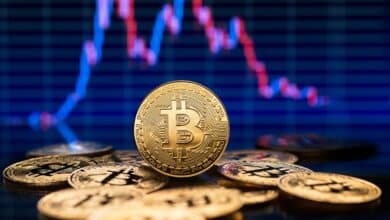Everything You Need To Know About Wyckoff Accumulation Theory

Introduction
Cryptocurrencies are everywhere and they are here to stay. These days most people who are on social media platforms know that cryptocurrencies are used to make money. However, the majority of the masses are still unaware of the techniques and strategies to generate profits with cryptocurrencies.
In this article, the reader will be able to learn about a tried and tested trading strategy called the Wyckoff Accumulation Theory. Adding such trading techniques to your arsenal can greatly improve the chances of making profits for cryptocurrency investors.
What is Wyckoff Accumulation Theory?
Wyckoff Accumulation Theory is a trading strategy that focuses on the process of trade purchases. This method is concerned with finding the best entry position and levels for investors based on the smart money footprint and market patterns.
In simple words, the Wyckoff Theory works on improving the accumulation skills of investors to ensure that they can identify the market levels that is likely to produce the best results for them. There are many cryptocurrency investment options available for the masses.
However, most people have no idea about what is the best time to purchase or sell a crypto asset. Therefore, investors can seek the best entrance positions for their cryptocurrency portfolios to increase their chances of making profits and mitigating market risks.
How Does Wyckoff Accumulation Theory Work?
The main objective of Wyckoff Accumulation Theory is that the consumers can identify the best market patterns and isolate windows for maximum output windows. This is made possible by looking at the footprint and trading habits of the biggest and most successful market players.
When big players enter the market they have the resources and skills at their disposal to conduct extensive research. Therefore, mirroring their strategies can be a warranted way to make profits.
To make this possible, Wyckoff’s Accumulation Theory works with a combination of Elliot Wave Theory and Dow Theory. It is important to notice that Wyckoff Method is not just about copying the movements of the big players in the region. It is based on extensive technical analysis and solid foundational laws to conduct qualified research on the marketplace.
This analysis allows the investors to identify recurring patterns and find the trading factors that help the smart money streams to make massive profits.
Origin of Wyckoff Accumulation Theory
Richard Wyckoff is the man who is attributed with the creation of this trading strategy. This type of trading strategy is unique because most investors only consider fundamental or technical analytics.
However, the approach of Wyckoff’s Accumulation Theory for generating profits is truly distinctive. Wyckoff’s Theory made its debut in the 1930s when its creators spent years spreading this technique and teaching more people this skill to help them improve their trading capabilities.
Wyckoff preached and claimed that the big players in the market leave find footprints and trading patterns that lead that should be analyzed using fractal price ranges. He also insinuated that by taking a closer look at these cryptocurrency sites traders can locate the ideal price positions for their portfolios.
What are the Three Wyckoff Laws?
The three Wyckoff Laws are the foundational principles that the investors who wish to use this method must learn about. Only after getting acquainted with these 3 laws, investors will be able to implement Wyckoff Accumulation Strategy for their trading positions. Here are these laws with brief explanations:
Supply and Demand
The law of demand and supply is a universal force that always controls the price of any asset in the market. This rule has been used by financiers, economists, and accountants to make better business decisions and conduct solid market analyses to issue logical projections. The law of Demand and Supply by Wyckoff can be explained in three scenarios:
- When Demand is greater than Supply, the price moves up.
- When Demand is lower than Supply, the price moves down.
- When the Demand is equal to the Supply, prices remain unchanged or stable.
In other words, Wyckoff preaches that as soon as the demand starts to rise above the supply of an asset the traders should expect a bull market. On the other hand, the prices of a cryptocurrency will start to dwindle as the supply becomes greater than the demand for it.
Despite the simple rule, it is not possible to ascertain demand and supply ratios using the cryptocurrency data charts because market variables change very quickly and continuously. However, investors use indicators for comparing volume and price action readings to find out demand and supply dynamics.
Cause and Effect
As per the theory of Wyckoff, the movements and interchangeability of demand and supply do not occur randomly. He interjected that these variables are moved by measurable factors. Wyckoff has pointed out two major factors that control the supply and demand dynamics of the market namely: Accumulation and Distribution.
Wyckoff claimed that Accumulation is the result of a period of preparation that is triggered by economic events. He claims that the rise in accumulation leads to an uptrend. Likewise, he also added that the increase in distribution gave rise to a downtrend effect in the market for any given asset. Therefore, this Wyckoff law is known as the Cause and Effect tenet.
Law of Effort and Result
Wyckoff’s third law deals with the idea that price movements happen on account of effort. This law also claims that the difference in the price action can be represented as the variables in Trading Volumes. This law dictates that when price action and the trading volume are moving in sync it signals that the asset is going to retain its current trend.
On the contrary, when the volume and price movement trajectories are in disagreement with each other divergence occurs and results in a trend reversal.
What is Wyckoff’s Price Cycle?
After working out the Wyckoff Laws, the next step toward understanding this trading strategy is to take a look at the Wyckoff Price Cycle. This is the idea that investors can estimate price movements for a given asset class by reading the changes in supply and Demand.
As mentioned in the Wyckoff Laws, the price cycle created by him also suggests that it is possible to measure supply and demand by looking at three main actors namely Volume, Price Action, and Time Duration.
His Price Cycle model suggests that investors can improve their trading positions by reading the trading patterns of successful investors. He used vertical bar and figure/point graphs charts to quantify these trading patterns.
With the formulation of such charts, investors can see the patterns that highlight the movements of professional investors in different market conditions such as bull and bear markets.
The diagram representation of the Wyckoff Cycle suggests that in the accumulation area the asset can become oversold and the markup increases. He pointed out that the markup phase is the best place to make trade purchases.
On the other hand, his Wyckoff Cycle diagram also showed that after enough markups, the asset can become overbought and become stagnant in the distribution phase with a higher price point than in the accumulation phase.
This has been highlighted as the ideal place to dissolve trading positions. Here are the main actors that investors can use to take understand the Wyckoff Price Cycle:
Supply and Demand
The forces of Supply and Demand are the focal point of the Wyckoff trading system. He has put a major emphasis on the importance of supply and demand in steering the direction of market movements.
He advises investors to keep a firm grip on the changes in supply and demand to make better trading decisions. The rule touts that the increase in supply can be directly linked to a declining price movement and in the same manner the increase in demand is attributed to the increase in supply.
If the investors can measure the percentage of supply and demand related to a trading product, it means that they can master the art of predicting the positive or negative price movement and make fruitful trading decisions.
One of the best ways to make it happen is to take the updated readings of supply and demand to compare them with price and volume changes based on different trading time frames.
Price Action
Price Action is the pillar of the Wyckoff Trading system that encourages investors to make future predictions about the price changes for an asset based on its historical movements. It is the most common and used method of conducting asset analysis in the marketplace.
Both professional and novice investors use analytical tools such as candlestick charts, support/ resistance bars, order flow, trend lines, and other indicators to ascertain the direction of price movements. There are also some universally accepted rules such as when the asset manages to break out of a crucial resistance level it can keep moving in the uptrend for a while.
As per the tenets of the Wyckoff Cycle, the accumulation phase is a range and as soon as any breakouts occur on the range, it conforms bull market advancement.
Volume
Price action is a strong indicator for helping in reading the market movements. However, investors cannot depend solely on price action alone to make all their trading decisions. Therefore, the volume analysis is another important trading scale within the Wyckoff Cycle.
This cycle model interjects that the accumulation phase is the bullish movement instigator and the distribution phase is the bearish marker. This cycle model claims that these market dynamics occur when the volume of the trading product has reached a required limit.
Therefore, the best move for the investors is to find the ideal price point that is accompanied by a substantial volume to find the ideal entry and exit price points.
Time Frame
Good timing can make or break any portfolio. Therefore, the Wyckoff cycle teaches that the market keeps circulating from the markup to the markdown phase. Additionally, the ideal buying or selling position lies wherever the timing is suitable.
Hence, when the price is consolidated within the trading range it means that the investors can shift to the lower time frame for making the best trading entrance. The goal of the investors is to seek a buying or entrance point when the accumulation phase is over or a sell position when the distribution phase is near its end.
What is the Composite Man Concept?
The Composite Man is a hypothetical scenario created by Wyckoff to teach investors about price movement and get familiar with the individual trading instruments on account of the overall market context. The Composite Man is an imaginary character who has the supernatural ability to move the prices of a given asset.
Therefore, he uses his powers from behind the scenes and pulls the strings of the market. He can extinguish the hope of making profits for other investors by manipulating the market prices in his favor alone. However, the traders are aware that the Composite Man positions are in a secure place and they will turn profits and would not become the target of the market movements.
Cryptocurrency investors can view the real-life example of Composite Man as the whale investors. Using the following stages of trading the investors can see how The Composite Man plays and wins the game of trading market manipulation:
The Planning Stage
The planning stage is the notorious area where The Composite Man is playing with the minds of retail investors inviting them to invest in a given cryptocurrency. However, before he touts a specific cryptocurrency he has already created massive positions with the same asset. This puts the Composite Man at a great advantage at the expense of other investors.
Therefore, Wyckoff claims that only the smartest investors can detect these speculative threats and not join the herd mentality. He also taught the investors that they should try to seek winning positions by looking for viable assets before it falls prey to the accumulative tactics of whales.
The Accumulation Stage
The Accumulation stage is also the first step in the Wyckoff Price Cycle. At this stage, the big players and institutional investors are creating orders and increasing their control of the market by benefitting from the increasing prices of the initial stage purchases. The Composite Man will keep accumulating more orders until he is ready to make his final move.
Therefore, even when the accumulation phase is showing buying pressure the prices of the asset remain unchanged. As per Wyckoff the best solution for the investors is to examine this trading position in detail and find the most suitable buying position using analysis of the price action and volume.
The Broad Market Approach
Wyckoff suggests that The Composite Man traps retail investors by remaining within the confines of the ongoing market trends. He tells the investors that these market trends can be measured by creating daily charts for the price of an asset based on closing, opening, high, and low prices. In this manner, anyone can read and follow the direction of the Broad Market.
As per Wyckoff, there are three types of trends namely upwards, downwards, and flat. Additionally, the changes in the trends can be measured in the following time frames such as short, medium, and long-term. As per Wyckoff, investors can look for higher highs to find uptrends and beware of lower lows to search for downtrends.
Sell-off Stage
When the accumulation phase is over, the buying pressure keeps increasing and the prices of the asset also go into an uptrend. However, most investors are unable to see the peak of the accumulation phase where the bullish forces of markup have reached their optimum levels.
Therefore, many investors end up accumulating at a high price and they are unable to sell at the right time to cash out their positions with the maximum profits.
As per Wyckoff, intelligent investors should refrain from making purchases with heavy costs when the sell-offs or the distribution phase is about to commence in full force. He also advised the investors to close their entry positions before markdown.
Conclusion
Investors who wish to learn more about Wyckoff’s Accumulation Theory can take a look at its Accumulation Schematics and Distribution Schematics. This method is a simple and effective method of identifying the market dynamics.
Using these method investors can refrain from falling into the pits of the traps that are the reason for the suffering and losses of novice investors. Wyckoff trading system is a great way to conduct the macro analysis of the market and beware of the speculative forces in the trading markets.
Tokenhell produces content exposure for over 5,000 crypto companies and you can be one of them too! Contact at info@tokenhell.com if you have any questions. Cryptocurrencies are highly volatile, conduct your own research before making any investment decisions. Some of the posts on this website are guest posts or paid posts that are not written by Tokenhell authors (namely Crypto Cable , Sponsored Articles and Press Release content) and the views expressed in these types of posts do not reflect the views of this website. Tokenhell is not responsible for the content, accuracy, quality, advertising, products or any other content or banners (ad space) posted on the site. Read full terms and conditions / disclaimer.







